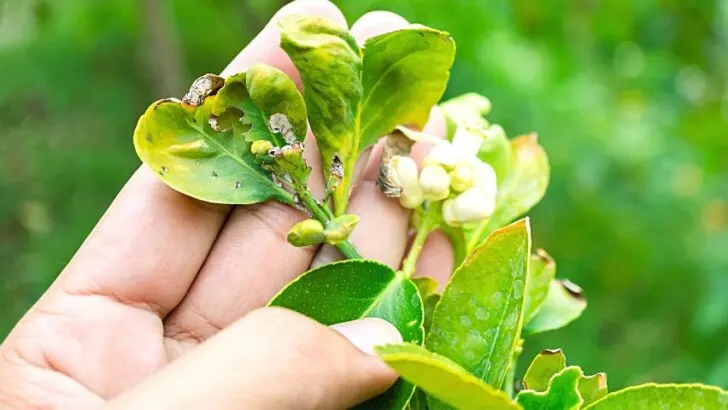Want to liven up your backyard orchards? Or are you looking to spruce your indoor look with container plants?
You would be interested to know that dwarf lemons, or Improved Meyer, do not only bear fruit but also works as an ornamental.
Apart from dwarf lemons, other lemon tree plants provide great benefits to their owners.
Lemon tree leaves make for good antibacterial liquids and, if crushed and put in a spray bottle full of water, can turn into your go-to air freshener. Lemon tree leaves are perfect.
However, you are not their only fan. Many lemon tree pests, including bugs like aphids and citrus rust mites, can be found on lemon tree leaves.
In this article, we will explore these pests in detail and possible solutions for dealing with them.
Table of Contents
What is Eating My Lemon Tree Leaves?
Some of the most common pests that eat lemon tree leaves are Aphids, Brown Soft Scale, Citrus Bud Mite, Citrus Thrips, and Citrus Whitefly.
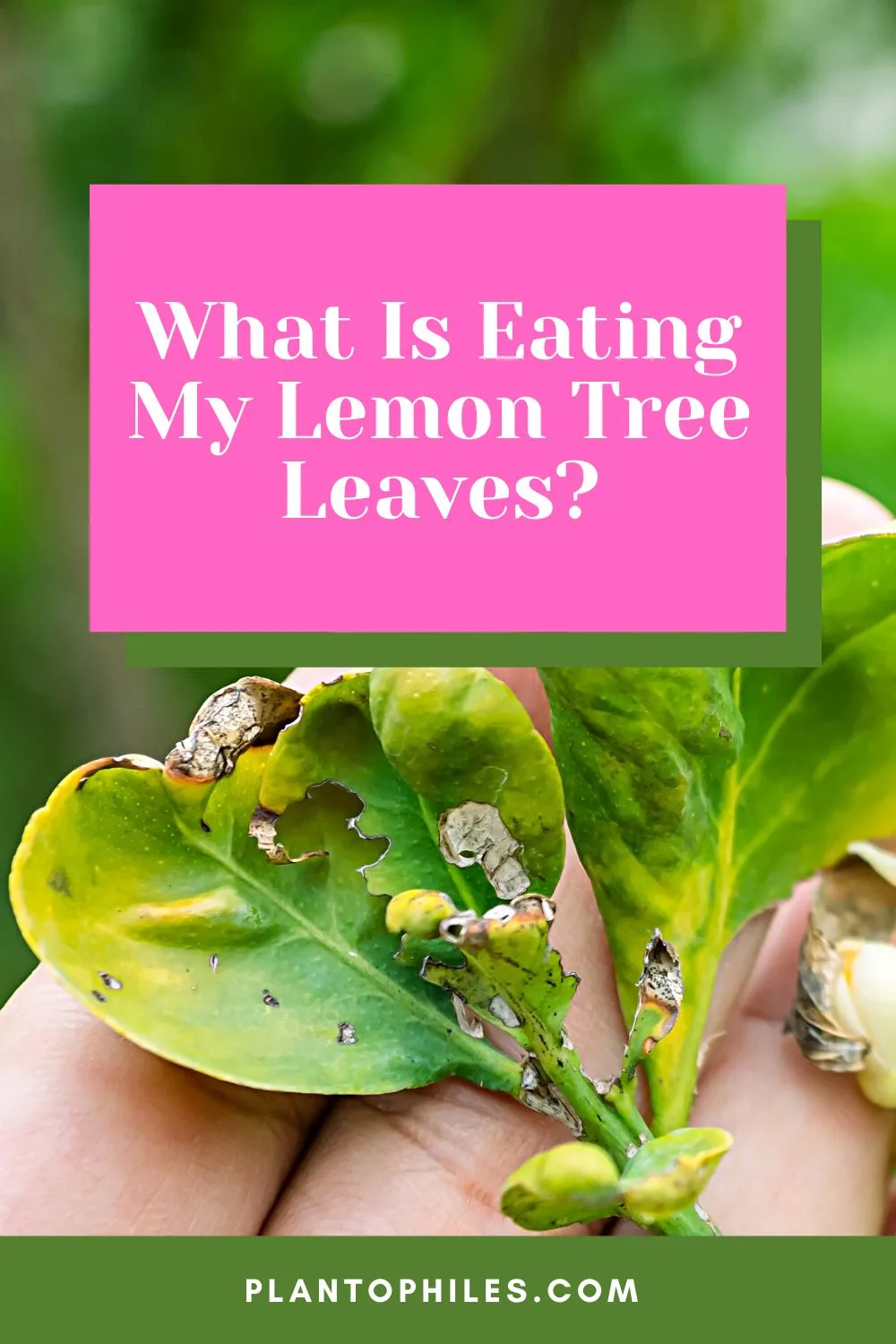
What is Eating My Lemon Tree Leaves?
1) Aphids
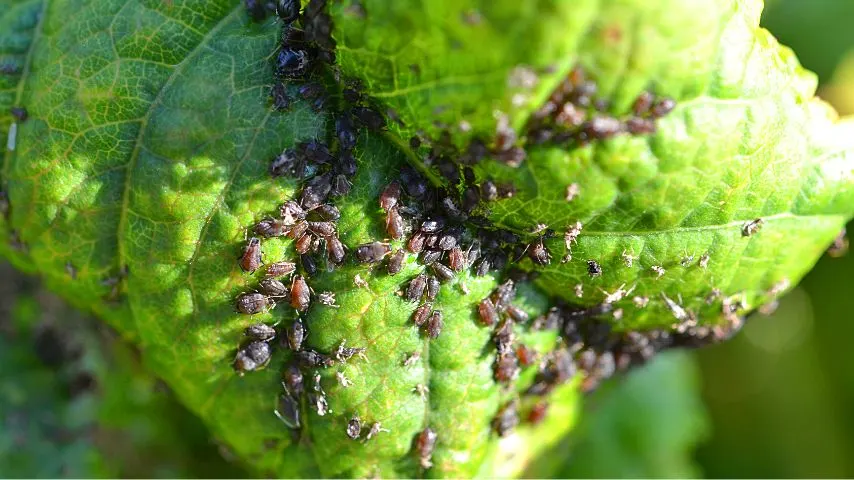
Aphids, especially the black and red species, love to eat the lemon tree leaves
Aphids, although known for causing minor damage to lemon tree leaves, are the most common cause of decaying lemon trees. But be wary, though, for aphids are most destructive when in large numbers.
There can be serious damage when these ants attack in numbers. Watch out for black and red swarms, or aim for earlier detection.
How exactly do these aphids cause damage to tree leaves?
Aphids suck the sap from the leaves. This results in some residue that is left behind – better known as honeydew. Sooty molds, a fungal plant disease, can develop if this honeydew is not cleared away as soon as possible.
These aphids cause a twofold danger – eating away your lemon tree leaves and allowing sooty molds to develop afterward. Be wary – these aphids can seek refuge in soil.
2) Brown Soft Scale
These are found not only on just lemon tree leaves but also on other citrus fruits.
Soft Brown Scale are small insects with a penchant for attaching to the foliage and wood of a tree.
Sometimes, they also stick to fruit. It’s relatively easy for you to identify them.
As per their name, they are brown – when fully grown to their adult size, they appear as brown crusty or waxy bumps on wood or fruit. This exterior makes for the perfect camouflage.
However, a closer inspection can help with your detection.
Sucking sap from the plant, these pests can cause a yellowing of leaves, resulting in their falling off. Scale insects like these do not respond well to horticultural oil and insecticide.
However, the latter can kill other healthier plants. We will get into solutions a bit later in the article.
3) Citrus Bud Mite
People with lemon trees in coastal areas must watch out for the Citrus Bud Mites. They have an elongated body, are four-legged, and infest at their best in summers and falls, with the blooms at their highest.
Unlike Soft Scales and Aphids, the Citrus Bud Mite is hard to detect because of its small size. Only in the case of large infestations will you be able to see these pests.
They usually swarm around fruit when they are still in their button form — because of this, ridding your lemon tree of a Citrus Bud Mite infestation is tricky.
Make sure no harm comes to the fruit.
4) Citrus Thrips
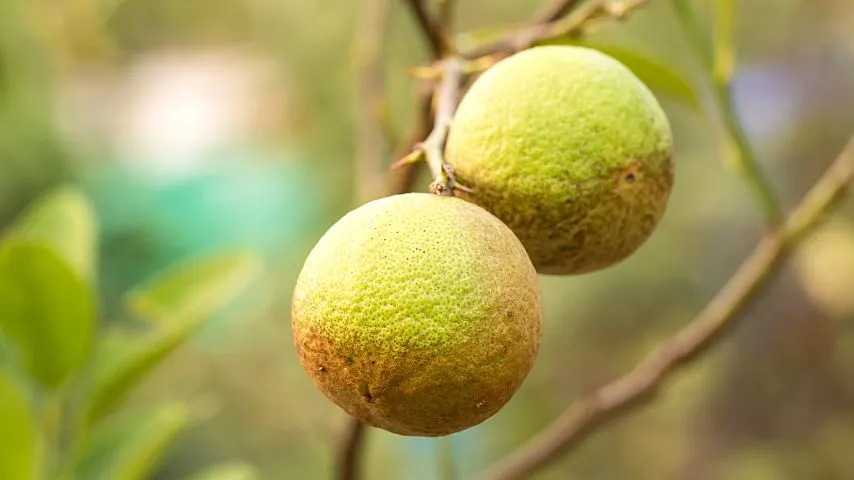
Citrus thrips not only eat the lemon tree leaves, but they also damage the lemon fruits
Nothing will be as frustrating of the pests mentioned so far as dealing with the Citrus Thrips. It is easy to tell if these determined pests have infested your lemon tree leaves.
You will notice a shriveling of the lead buds as a sign of Thrips damage. The leaves will curl up and distort, appearing like shrivels from afar.
These pests also cause the fruit they have infested to scab and streak. Not only do they damage tree leaves, but they also cause damage to the lemon fruit.
Citrus Thrips are tiny, but their orange-yellow color gives them away. They attack a variety of fruit – not just lemon trees. What helps them with their infestation is that they attack younger fruit.
This is followed by fall, the time when they lay their eggs. It is Springtime when these eggs hatch and the young Thrips continue feasting on the fruit the entire growing season, making this infestation a year-long business.
Horticultural oil is the best solution to battle Citrus Thrips.
5) Citrus Whitefly
Looking at the underside of your lemon tree leaves, you might find a half-inch-in-length insect called the Citrus Whitefly.
So, your lemon tree’s leaves haven’t been their usual, bright selves, and you cannot tell what’s wrong with them? Just a single, gentle shake might help diagnose the problem.
Looking at the underside of the leaves, if white-winged insects fly away, disturbed by your shaking, you just made a swarm of Citrus Whiteflies fly away.
However, shaking is insufficient to rid your lemon tree leaves of infestation. The Whitefly can also lay eggs on the leaves’ undersides.
Like the aphids, whiteflies can also leave honeydew in their wake, allowing molds and fungal outgrowth to spread.
Note that it is harder to control the adults, but the juvenile population is easier to castrate with the careful use of insecticides.
How to Rid Your Lemon Tree of These Pests
Insecticides, for the most part. However, some parts of your plant or others surrounding the area might not respond kindly to your insecticides.
When spraying away at the infected parts, ensure you spray only the infestation and not any healthy bit.
Citrus Tree Diseases
It may not only be pests and bugs eating away at your Citrus Tree leaves if you cannot find any pests.
1. Citrus Canker
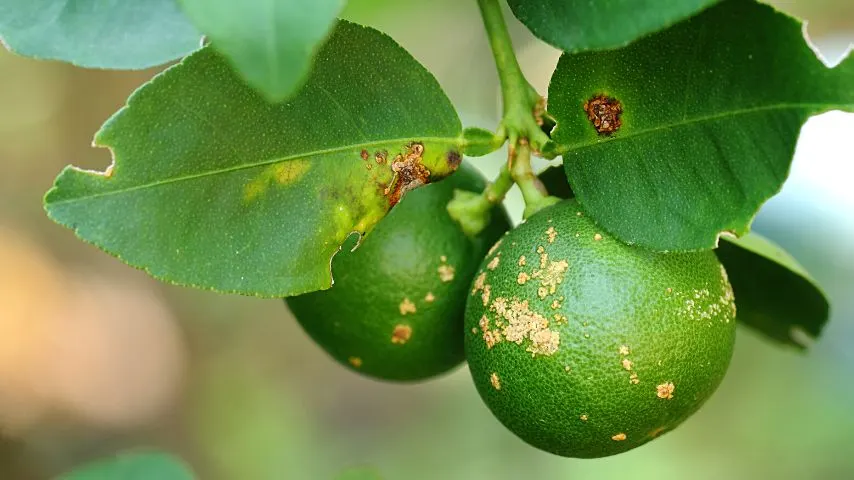
Citrus canker is one of the most dangerous bacterial disease that affects your lemon tree leaves
Citrus Canker is a gardener’s worst nightmare. Canker is a highly dangerous bacterial disease that is spread in lemon trees – in particular – by the bacteria Xanthomonas axonopodis.
Citrus canker leaves lesions that are orange to yellow on the tree’s fruit, leaves, and twigs. It spreads pretty faster; if not dealt with initially, it spreads to the uninfected parts of the tree, resulting in rapid loss of leaves and even the tree’s death.
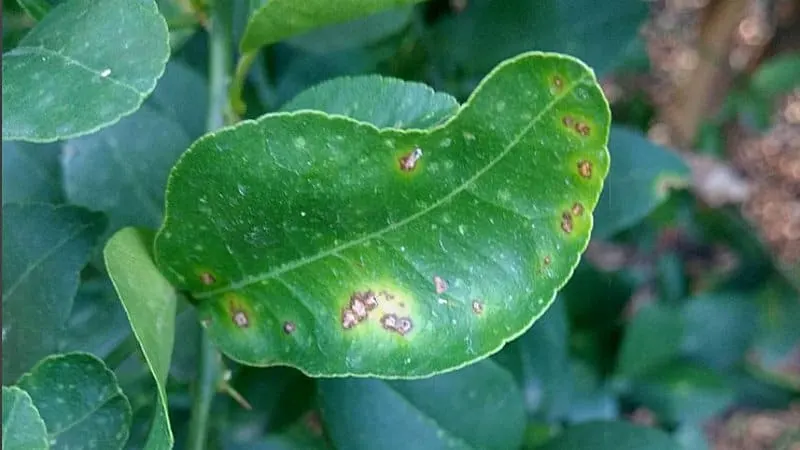
Photo Credit: @gifted_.nature on Instagram!
You can use liquid copper fungicide for maximum protection against Citrus Canker. This needs to be done preventatively.
All infected trees, however, need to be removed immediately as the spread is too fast.
2. Greasy Spot
Yellow-brown blister spots are indicators that your lemon tree has caught Greasy Spot. You can typically find greasy spot on the foliage’s undersides.
Over time, greasy spots are known to develop into oily blisters. This fungal outburst causes numerous loss of leaves – more so in winter.
No fruit is safe from its wrath. Dealing with greasy spot is best dealt with by thinking preventatively. Control methods like removing and collecting fallen leaves are a good bet in reducing greasy spot spores.
A dual application of copper fungicide works wonders if you catch these spots early.
3. Melanose
Melanose is a fungal disease that mostly affects grapefruit trees. However, lemon trees are easy prey as well.
Melanose is known to cause scabbed fruit rinds. The fruit can be made to look unsightly, but the taste remains unaltered.
Regular pruning of trees keeps this fungal disease at bay as Melanose likes to propagate in dead wood. While you can opt to leave it as the fruit quality remains unaffected, it is not recommended.
If you’re a hardcore gardener, you won’t want to do so.
4. Root Rot
This disease of the tree bark is also called brown rot. Fungal in nature, it is caused by the soil-borne fungus of the Phytophthora genus.
The tree’s bark, if infected, will catch dark brown patches, hardening the already sturdy bark. They grow a skin of their own, making these patches extremely hard to crack and remove.
The roots are a tree’s primary source of nutrition, which is why, when infected, the roots cause the leaves to decay. The barks eventually lose their sturdiness, crack, and break apart, dying in the process.
The tree collapses – but this comes later.
Root Rot can be seen in older plants, but the implications are the same as any other disease.
Conclusion
Mostly, it is pests. From the pests that we have mentioned above, you are likely to be facing the wrath of one.
Taking control of the problem from the onset is the way to go. It starts with detection.
The earlier you act, the better the outcomes. Horticultural oil works best, but any good-quality insecticide will serve the same purpose.
It could be a plant disease if you cannot find any pests.
To keep it protected, plant your citrus tree in a sunny area. Shading cannot necessarily limit its growth.
However, lemon trees tend to grow less fruit in shady spots. Dry, humid areas are perfect for lemon trees as there is less chance for fungal diseases to take root.
With rich soil – well-dipped loam, to be exact – your lemon tree will receive the nutrition it needs. Spray an insecticide every once in a while to keep pests at bay.

Daniel has been a plant enthusiast for over 20 years. He owns hundreds of houseplants and prepares for the chili growing seasons yearly with great anticipation. His favorite plants are plant species in the Araceae family, such as Monstera, Philodendron, and Anthurium. He also loves gardening and is growing hot peppers, tomatoes, and many more vegetables.

